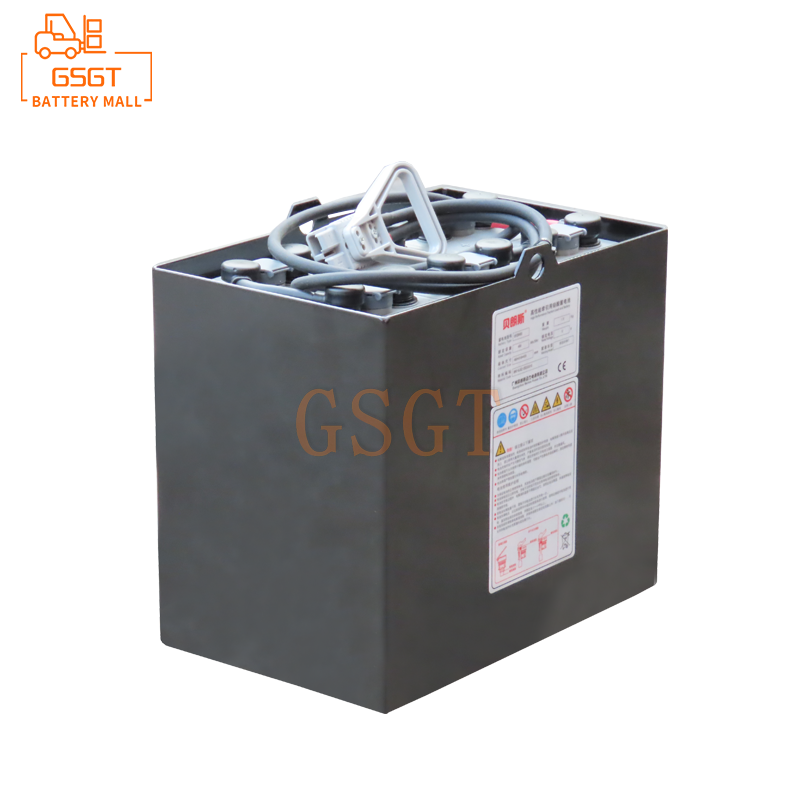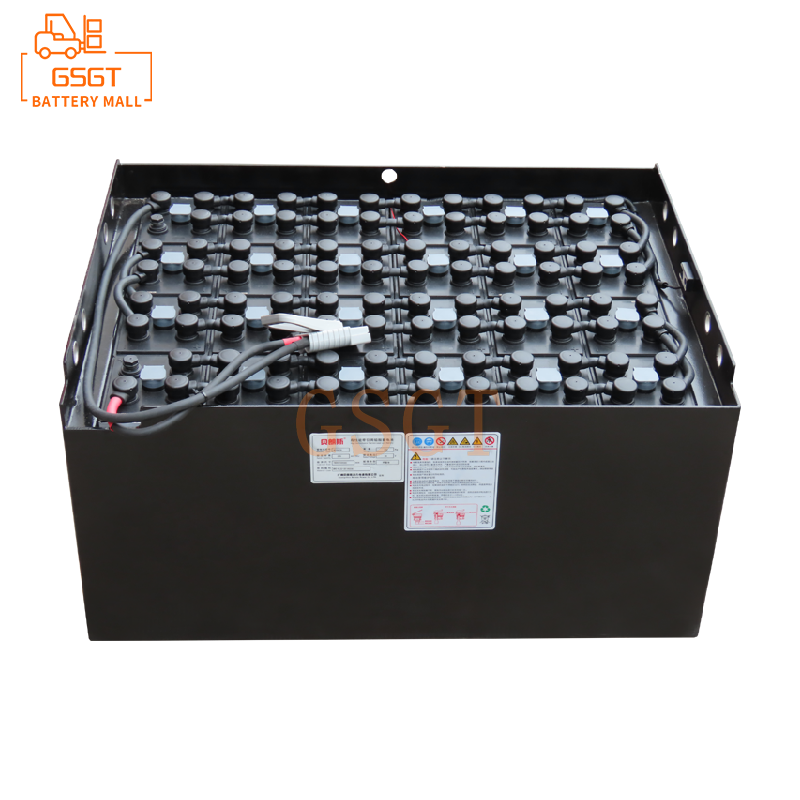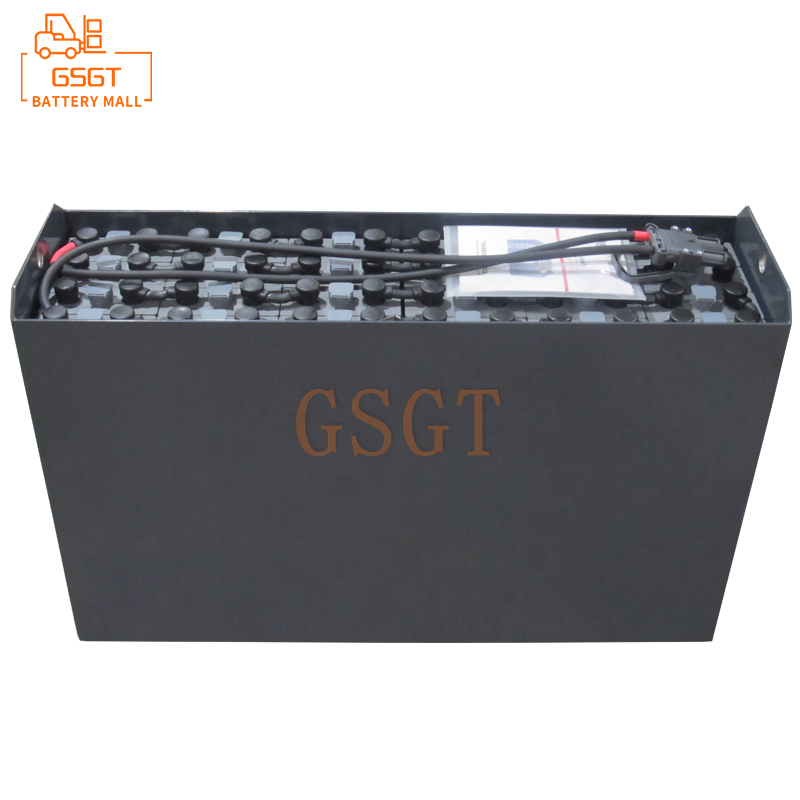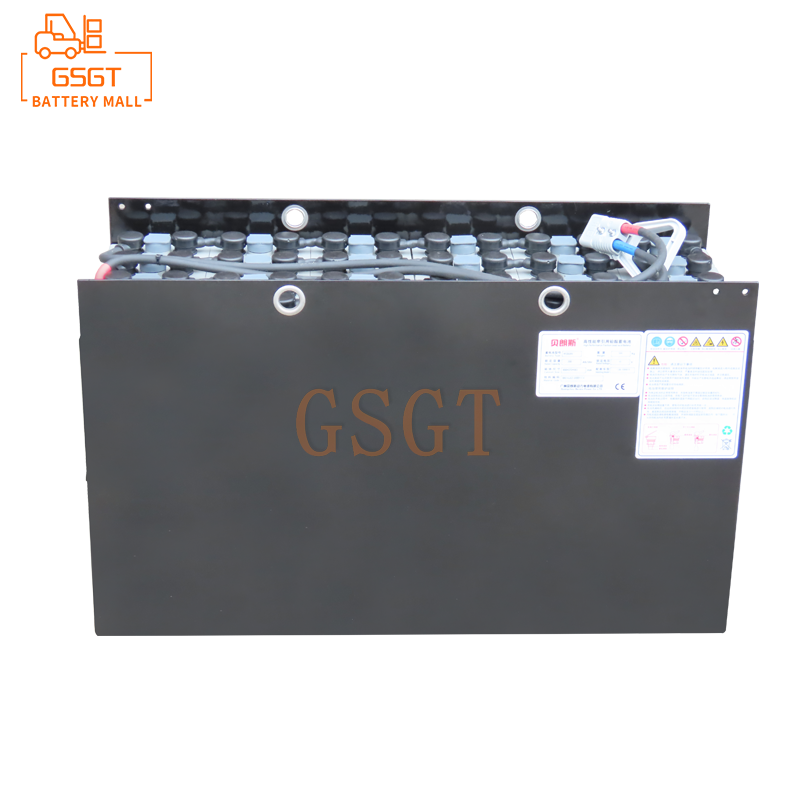Time:2025-06-07 13:10:12
Browse:593
Introduction
As an important handling equipment in logistics, warehousing and other industries, the performance and lifespan of lead-acid batteries, one of the power sources of forklifts, directly affect the usage efficiency and operating costs of forklifts. Lead-acid batteries face various challenges under different working conditions, such as charging, discharging, operation in high or low temperature environments, and long-term idleness. Targeted maintenance measures are required to ensure their stable operation and extend their service life. A thorough understanding and effective maintenance under different working conditions are of great significance for ensuring the normal operation of forklifts and reducing the operating costs of enterprises.
Key points for maintenance during charging conditions
1. Choose the appropriate charger
Forklift lead-acid batteries have their specific charging parameter requirements. Batteries from different manufacturers and models vary in terms of voltage, capacity, etc. Therefore, it is necessary to choose a charger that matches them. Using an unmatched charger may lead to undercharging or overcharging. For instance, if the charging voltage is too low, the battery cannot be fully charged. If it remains in a state of low charge for a long time, it will accelerate the sulfation of the plates and reduce the battery capacity. If the charging voltage is too high, it will cause excessive gas evolution and water loss in the battery, resulting in the shedding of active substances on the plates and shortening the battery's lifespan. When choosing a charger, strictly refer to the battery's user manual to ensure that the output voltage, current and other parameters of the charger are consistent with the battery's requirements.
2. Control the charging time and frequency
Avoiding overcharging and undercharging is the key. Overcharging will cause the battery to heat up, accelerate the evaporation of water in the electrolyte, leading to the battery drying up. At the same time, it will also cause the active material on the plates to harden and fall off. Insufficient charging will cause sulfation of the battery plates and reduce battery performance. Generally speaking, lead-acid batteries of forklifts should be charged in a timely manner after discharging. Under normal circumstances, charging should be carried out when the battery power remains at 20% to 30%. Each charging time should not be too long, usually around 8 to 10 hours. The specific time can be determined based on the actual charging status of the battery and the instructions of the charger. For the working condition of forklifts being used continuously for a long time, a phased charging method can be adopted. First, perform rapid charging to about 80%, and then proceed with trickle charging to ensure the battery is fully charged without overcharging. At the same time, the battery should be deeply charged regularly, usually once every 2 to 3 weeks, to activate the active substances on the plates and increase the battery capacity.
3. Monitor the parameters during the charging process
During the charging process, it is necessary to closely monitor parameters such as the battery's voltage, current, temperature and electrolyte density. Voltage is an important indicator reflecting the charging status of a battery. As charging proceeds, the battery voltage gradually rises. When it reaches the specified charging termination voltage, it indicates that the battery is basically fully charged. The magnitude of the current should also be within an appropriate range. Excessive charging current will cause the battery to heat up severely and affect its lifespan. Temperature has a significant impact on the performance of lead-acid batteries. During charging, the battery temperature should be controlled between 25℃ and 40℃. If the temperature is too high, charging should be suspended and cooling measures should be taken, such as ventilation for heat dissipation or using a fan to blow air. Charging can resume only after the temperature drops. The density of the electrolyte also changes during the charging process. By measuring the density of the electrolyte, the charging degree of the battery can be determined. Generally, the density of the electrolyte should reach the specified value at the end of charging. Regularly recording these parameters can help detect abnormal conditions of the battery in a timely manner. For instance, a slow increase in voltage may indicate internal faults in the battery or sulfation of the plates.
Key points for maintenance under discharge conditions
1. Prevent excessive discharge
Excessive discharge of lead-acid batteries can cause irreversible damage to the plates. When the battery discharges to the terminal voltage, a large amount of lead sulfate will be generated on the plates, and these lead sulfate will gradually form coarse crystals, blocking the pores of the plates and making it difficult for the electrolyte to penetrate, resulting in an increase in the internal resistance of the battery and a decrease in its capacity. Forklift controllers are usually equipped with under-voltage protection functions. However, in actual use, one cannot rely solely on this function. Operators should always pay attention to the electricity meter. When the battery level shows low, they should stop the operation in time and charge it. It is generally recommended to stop discharging when the battery power remains at about 20% to avoid over-discharging. In addition, during the operation of forklifts, frequent starts, sudden accelerations and sudden braking should be avoided as much as possible. These behaviors can cause sudden large current discharges and aggravate the damage to the battery plates.
2. Control the discharge current
The magnitude of the discharge current also has a significant impact on the service life of the battery. High current discharge will intensify the chemical reactions inside the battery, generating a large amount of heat, causing the battery temperature to rise and accelerating the shedding of active substances on the plates. Forklift lead-acid batteries of different specifications have their maximum allowable discharge currents. In actual use, operations should be reasonably arranged according to the load conditions of the forklift to avoid long-term operation under heavy load, high-speed driving and other high-current discharge conditions. For instance, when handling heavy goods, the driving speed can be appropriately reduced, and the frequency of starting and accelerating can be decreased to lower the discharge current. At the same time, regularly inspect the motor, controller and other electrical equipment of the forklift to ensure their good performance and avoid abnormal increase in discharge current due to equipment failure.
3. Regularly carry out deep discharge and activation
Although it is necessary to prevent over-discharge, regular deep discharge is also beneficial to the battery to a certain extent. At regular intervals (generally every 1 to 2 months), during the normal operation of the forklift, perform a deep discharge on the battery until it reaches under-voltage protection. However, it is important to note that the allowable discharge depth of the battery must not be exceeded. After deep discharge, fully charge the battery. This can promote the active substances on the plates to fully participate in the chemical reaction, achieving the purpose of activating the battery and helping to enhance the battery's capacity and performance. However, the frequency of deep discharge and activation should not be too high; otherwise, it will also cause damage to the battery.
Key points for maintenance in high-temperature environment conditions
1.Strengthen heat dissipation and ventilation
In high-temperature environments, the chemical reaction rate of lead-acid batteries increases, generating more heat. If the heat cannot be dissipated in time, it will cause the battery temperature to rise too high, accelerating the aging and damage of the battery. Forklifts should be parked in well-ventilated areas as much as possible and avoid prolonged exposure to direct sunlight. During the operation of the forklift, the ventilation device in the battery compartment can be turned on to enhance air circulation and remove the heat generated by the battery. For some forklifts operating in harsh environments such as high-temperature workshops, it is advisable to consider installing additional cooling fans to force the battery to cool down. At the same time, regularly clean the dust and debris on the battery surface and inside the battery compartment to maintain good heat dissipation conditions. This is because the accumulation of dust will affect the heat dissipation effect and cause the battery temperature to rise.
2. Adjust the density and liquid level of the electrolyte
As the temperature rises, the evaporation of water in the electrolyte accelerates and its density changes. In high-temperature environments, the density of the electrolyte can be appropriately reduced. Generally, for every 10℃ increase, the density of the electrolyte can decrease by approximately 0.007g/cm³. This helps to reduce the self-discharge of the battery and the corrosion of the plates. At the same time, closely monitor the electrolyte level. Due to water evaporation, the level may drop. When the level is below the standard line, distilled water should be added in time. Do not add sulfuric acid or other impurities to avoid affecting the battery performance. When adding distilled water, be careful not to add too much to avoid the electrolyte overflowing. Regularly check the density and liquid level of the electrolyte and keep records so as to identify problems in time and make adjustments.
3. Reduce the charging voltage and current
In high-temperature environments, the internal resistance of batteries will decrease. If charging is still carried out according to the charging parameters at normal temperature, it is easy to cause overcharging. Therefore, under high-temperature working conditions, it is necessary to appropriately reduce the charging voltage and current. Generally, the charging voltage can be reduced by 0.2-0.3V per cell, and the charging current can be reduced by 10% - 20%. At the same time, closely monitor the temperature changes of the battery during the charging process. If the temperature is found to be too high, further reduce the charging voltage and current, or pause the charging and resume it after the temperature drops. In addition, the charging time can be appropriately shortened to prevent overcharging of the battery. By reasonably adjusting the charging parameters, the adverse effects of high-temperature environments on battery charging can be effectively reduced, and the battery life can be prolonged.
Key points for maintenance in low-temperature environmental conditions
1. Increase the temperature of the electrolyte
Low temperatures will increase the viscosity of the electrolyte in lead-acid batteries, slow down the diffusion rate of ions, resulting in an increase in the internal resistance of the battery and a decrease in its capacity. To increase the temperature of the electrolyte, the forklift can be parked in a warm room or a dedicated battery heating device can be used to preheat the battery. In the absence of heating conditions, the battery can be charged with a small current for a short period of time before forklift operation. The heat generated during charging can be used to increase the temperature of the electrolyte. However, it should be noted that the charging time should not be too long to avoid battery damage. In addition, the density of the electrolyte can be appropriately increased. Generally, for every 10℃ reduction, the density of the electrolyte can increase by 0.01-0.02g/cm³ to enhance the battery's performance at low temperatures.
2. Increase the charging frequency and duration
In a low-temperature environment, the battery's charging acceptance capacity decreases, and it takes longer and requires a higher charging voltage to fully charge. Therefore, the charging frequency should be appropriately increased. Charging should be carried out when the battery discharge reaches 20% to 30% to prevent excessive discharge of the battery. At the same time, extend the charging time. Generally, it can be increased by 1 to 2 hours on the basis of the charging time at room temperature. During the charging process, a constant voltage and limited current charging method can be adopted. Initially, a large current is used for rapid charging. Once the battery voltage rises to a certain value, it automatically switches to a small current charging to ensure that the battery can be fully charged. In addition, when charging in a low-temperature environment, the gas evolution phenomenon of the battery will decrease. The upper limit of the charging voltage can be appropriately increased, but it is necessary to be careful not to exceed the allowable value of the battery to avoid damaging it.
3. Take good measures to keep the battery warm
Keeping the battery warm can effectively reduce heat loss and improve battery performance. Insulation materials such as foam boards and insulation cotton can be laid in the battery compartment to wrap the batteries. When a forklift is parked for a long time, an insulation cover can be used to cover the battery to prevent heat dissipation. At the same time, avoid rapid discharging of the battery in low-temperature environments, such as sudden acceleration and sudden braking operations. Try to keep the forklift running smoothly to reduce battery wear and tear. In addition, when starting a forklift in a low-temperature environment, if the first attempt is unsuccessful, do not start it multiple times in a row. Wait for a period of time and then try again to avoid causing excessive impact on the battery.
Key points for maintaining long-term idle working conditions
1. Store fully charged
Before the lead-acid battery of a forklift is left idle for a long time, it should be fully charged first to keep the battery in a fully charged state. Because batteries will have self-discharge during the idle period, if the battery power is too low, it is easy to cause sulfation of the plates, affecting the battery life. After the charging is completed, a equalization charge can be performed on the battery once to ensure that the power of each individual battery is uniform. The method of equalization charging is generally to continue charging with the current of the second stage of normal charging until intense bubbles are produced, then stop charging for one hour. Repeat this process several times until the voltage and density remain unchanged. After an interval, charge again until intense bubbles are immediately produced.
2. Regular supplementary charging
Even if the battery is stored fully charged, its power will gradually decrease due to the existence of self-discharge. Therefore, during the long-term idle period of the battery, supplementary charging should be carried out regularly, usually once every 1 to 2 months. When recharging, you can use the normal charging method to fully charge the battery. During the charging process, it is necessary to pay attention to observing parameters such as the battery's voltage, current and temperature to ensure that the charging proceeds normally. Regular supplementary charging can maintain the battery's activity, prevent sulfation of the plates, and extend the battery's service life.
3. Check the electrolyte and appearance
During the idle period of the battery, the liquid level and density of the electrolyte should be checked regularly. Due to reasons such as water evaporation, the electrolyte level may drop. When the level is below the standard line, distilled water should be added in time. At the same time, check whether the density of the electrolyte is within the normal range. If there is any deviation, adjustments can be made according to the actual situation. In addition, the appearance of the battery should be inspected to check if the battery casing is damaged or deformed, and if the terminals are corroded, etc. If any problems are found, they should be dealt with promptly to prevent them from worsening and affecting battery performance. For the corrosion on the terminal posts, they can be wiped clean with a damp cloth and then an appropriate amount of Vaseline can be applied to prevent further corrosion.
Conclusion
The maintenance focus of forklift lead-acid batteries varies under different working conditions, covering multiple aspects such as charging, discharging, temperature environment, and long-term idleness. By correctly choosing the charger, reasonably controlling the charging and discharging time and current, adjusting maintenance measures according to the temperature environment, and doing a good job in maintenance during long-term idleness, the service life of the battery can be effectively extended, the usage efficiency of forklifts can be improved, and the operating costs of enterprises can be reduced. In actual operation, forklift operators and maintenance personnel should fully understand the characteristics of the battery and the maintenance requirements under different working conditions, strictly follow the norms for operation and maintenance, promptly identify and solve problems with the battery, ensure that the lead-acid battery of the forklift is always in good working condition, and provide reliable power support for the production and operation of the enterprise.

$400

$5710

$2530

$2040

MESSAGE
Professional And Efficient
Security
Affordable Price
Professional Services